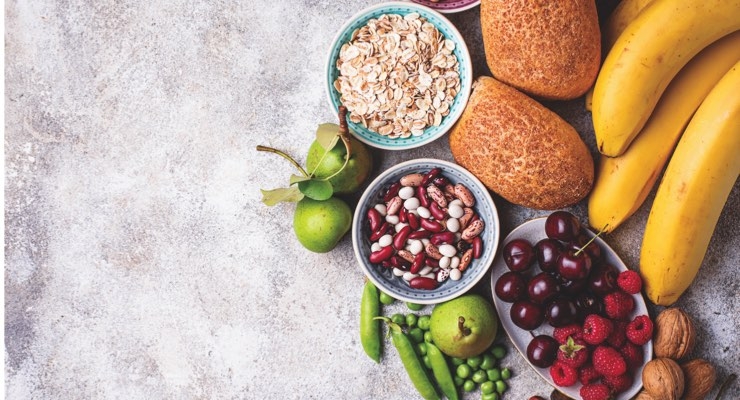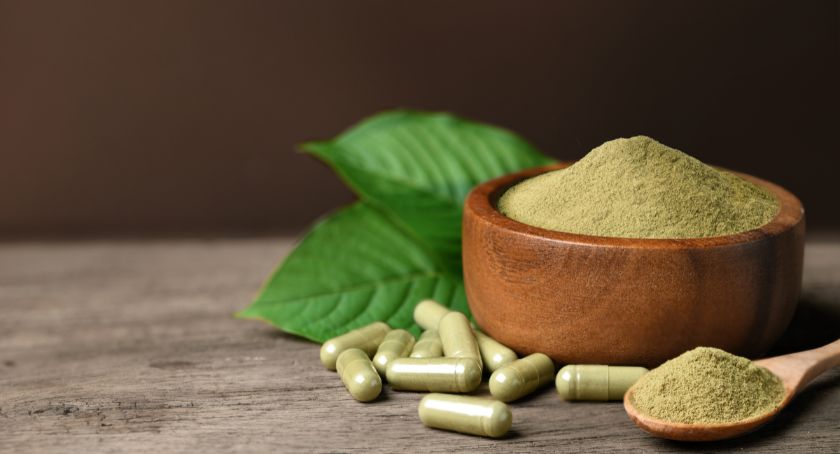Features
Fiber Revisited: Closing the Gap
Since FDA’s redefinition of fiber, innovation in healthy and natural foods, supplements, and beverages is ready for a renaissance.

By: Lisa Schofield

On May 27, 2016, the U.S. Food and Drug Administration (FDA) published a definition of “dietary fiber” and created a pre-approval system for various isolated and synthetic non-digestible carbohydrates (NDCs). For all food labeled on or after Jan. 1, 2020, the isolated or synthetic NDCs must be determined by FDA to have a physiological effect that is beneficial to human health before they can be counted as dietary fiber for nutrition labeling purposes.
Dietary fiber is now defined by FDA as “non-digestible soluble and insoluble carbohydrates (with three or more monomeric units), and lignin that are intrinsic and intact in plants; isolated or synthetic non-digestible carbohydrates (with three or more monomeric units) determined by FDA to have physiological effects that are beneficial to human health.”
This change has impacted product development in some significant ways.
According to Aouatef Bellamine, PhD, senior science manager, Lonza Consumer Health & Nutrition, Morristown, NJ, the new fiber definition means dietary supplement formulators and manufacturers will need to either adhere to this list of ingredients if they want to make a fiber claim, or petition for their fiber source to be added to the definition.
One company doing just that is Somerville, NJ-based Nexira, which along with representatives of the gum acacia industry, is conducting additional studies to strengthen the evidence supporting the beneficial effects of gum acacia on blood glucose attenuation and energy intake, noted Julie Impérato, marketing manager. After completion of the studies, Nexira is expected to submit a Citizen Petition to FDA in the spring of 2019 to request that gum acacia be recognized as a dietary fiber for nutrition labeling and claims on foods and beverages. “We are hopeful to receive a positive response from FDA by the summer of 2019,” said Ms. Impérato.
However, this strategy presents challenges. Ramon Luna, marketing coordinator for Clifton, NJ-based Ecuadorian Rainforest, LLC, which offers numerous functional fibers for a broad range of health products, said cost is one of the biggest hurdles associated with the testing of any fiber that does not fall into FDA’s specific definition, even for well-known non-digestible carbohydrates. Testing is a long and expensive process, so it’s not surprising companies are worried that this definition will end up putting a lot of pressure on both big and small companies in the industry.
At the same time, FDA’s guidance has spurred healthy product development, according to several sources.
“The additional approvals have significantly extended the list of recognized dietary fibers,” said Jon Peters, president of BENEO Inc., Parsippany, NJ. “Thanks to this larger choice of fibers, delivering fiber enrichment in a great tasting way can now become a reality for many manufacturers. It will definitely support the development of new consumer products as all dietary fibers have different technological properties (e.g., related to texture and taste), so food manufacturers will now be able to select the right fibers to perfectly suit their products.”
Carl Volz, president of Sensus America, agreed, noting that product development has increased since the addition of inulin-type fructans to the approved fiber list. Product development was largely put on hold by various food manufacturers who preferred to wait for this FDA clarification. “These projects/opportunities are going forward, full speed ahead. Innovation in this area can finally commence again,” he said. “The approval broadens the pool of ingredients manufacturers can choose from when enriching their products with fiber.”
Patrick Luchsinger, marketing manager of nutrition for Ingredion Incorporated, Westchester, IL, added, “More manufacturers are looking to reformulate or adjust slightly as they look to differentiate.”
Fulfilling Innovation
It is an exciting time to formulate with fibers, which can be applied to a broad spectrum of products. At the same time, health-minded consumers are primed for the combination of well-being support and great taste.
Lonza’s ResistAid arabinogalactan, extracted from larch trees, is a highly branched non-starch polysaccharide that “provides year-round, triple-action immune support and is used in many global products as a soluble fiber,” said Dr. Bellamine. ResistAid arabinogalactan has been shown in randomized, double-blind, placebo-controlled studies to support the body’s adaptive immune response (Nutrition Journal, 2010; Journal of the American College of Nutrition, 2013). “Immune health and overall wellness is increasingly linked to gut health, with fiber and gut microbiota playing key roles,” she said.
Non-GMO acacia tree sap is the source of Nexira’s Fibregum, a non-digestible, high molecular weight polysaccharide with a guaranteed minimum content of 90% soluble fiber on a dry weight basis, according to the company’s Ms. Impérato.
Fibregum is useful to promote digestive health, she added. It has a prebiotic effect by nourishing the microbiota and stimulating short chain fatty acid production (Microbial Ecology in Health and Disease, 2003). Secondly, Fibregum decreases glycemic and insulinemic index. In the EU, as a non-digestible carbohydrate, Fibregum is allowed a health claim on glycemia reduction: “Consumption of foods/drinks containing acacia gum instead of sugars induces a lower blood glucose rise after their consumption compared to sugar-containing foods/drinks.” Ms. Impérato also noted Nexira’s research has shown that Fibregum also contributes to reinforcing the impermeability of the gut epithelium and has a pending patent (Agro FOOD Industry Hi Tech, 2015).
Ingredion offers its prebiotic fiber NUTRAFLORA, a short-chain fructooligosaccharide (scFOS). Ms. Luchsinger said it is effective at 1.1 g/day for digestive and immune support. NUTRAFLORA scFOS narrows the fermentation profile and is preferentially fermented by beneficial gut bacteria, he said, and its short-chain structure (DP3-5) prevents pathogens from fermenting the fructose molecules.
“Peer-reviewed papers also have demonstrated that Bifidobacteria and Lactobacilli metabolize scFOS by cell wall-associated enzymes,” he noted. “The fructosidase enzyme activity is molecular weight dependent and scFOS, being lower molecular weight, is a stronger substrate for Bifidobacteria and Lactobacilli. These studies show a higher activity for DP-3 and DP5 with Bifidobacteria and higher activity for DP3 and DP4 for Lactobacilli,” (Applied Microbiology and Biotechnology, 1989; Applied and Environmental Microbiology, 2000 and 2003; Proceedings of the National Academy of Sciences, 2003).
Ingredion also provides BIOLIGO GOS (galactooligosaccharide), a soluble prebiotic fiber produced from lactose via an enzymatic process. GOS prebiotic fiber is widely utilized in infant formulas because it provides benefits similar to those provided by oligosaccharides in mothers’ milk, Mr. Luchsinger said.
Chicory root is another viable prebiotic fiber to consider when formulating foods, beverages, and supplements, and tends to work in the same manner by supporting growth of good bacteria via fermentation in the large intestine.
BENEO’s chicory root fibers inulin and oligofructose are extracted by a hot-water process, and according to Mr. Peters, they have numerous scientific studies showing their benefits such as digestive health, bone health, and weight management.
Two studies demonstrated the latest analytical methods reviewing the selective growth of beneficial bacterial initiated by chicory root fiber. Also, the significant decrease of a potential pathogen, Bilophila, was demonstrated, he said. Participants improved their normal stool frequency per week and felt better, (American Journal of Clinical Nutrition, 2018; Nutrients, 2017).
In children, softening stools within the normal range is often an important parameter to support digestive function. One study (Journal of Nutrition, 2018) sought to determine if the regular intake of chicory root fibers inulin and oligofructose led to an improvement in inner resistance, measured by the counting of fever episodes/infections during the cold season. “The study demonstrated a significant decrease in fever episodes and sinusitis combined with an improved microflora with a higher number of Bifidobacteria,” Mr. Peters reported.
Minneapolis, MN-based Cargill’s chicory root fiber, Oliggo-Fiber inulin also stimulates healthy growth of Lactobacillus and Bifidobacterium species with just five grams per day, according to Nicole Durch, senior technical service specialist. Research has also indicated chicory root fiber’s benefits extend beyond digestive health. “One of the most surprising and well-studied discoveries is the role of prebiotics in enhancing calcium absorption to improve bone mineral density,” she said (Journal of the American College of Nutrition, 2017). Studies have also focused on the impact of prebiotics in the early markers of cardiovascular and metabolic diseases. For example, in a mouse study, researchers showed that inulin-type fructans may improve host endothelial dysfunction, an early marker of cardiovascular disease, through changes in the gut microbiota (Gut, 2017). “These findings, if replicated in humans, could support positioning prebiotics as a novel dietary approach to the management of metabolic disorders related to cardiovascular disease,” said Ms. Durch.
Broad Application
Take time to wander up and down grocery store aisles to see the proliferation of foods and beverages that are “better for you.” Both new boutique brands and re-formulated venerable name brands are finding shelf space. Supplement aisles now feature a growing number of products with new delivery formats, including gummies and chews. Functional fibers provide potential to marry form and function for product success.
Lonza’s ResistAid arabinogalactan is flexible for use in dietary supplements and functional foods in standalone form or combined with other products to increase functionality, according to Dr. Bellamine. “Due to its highly-branched structure it is freely soluble, dissolving completely in hot or cold water, and is also stable at a wide range of temperatures and pH, which provides for use in various applications. In beverage applications, it keeps its functionality and neither degrades nor hydrolyzes.”
“One of the main goals of healthy food producers is to provide a sufficient dose of fiber without discomfort such as gas or bloating,” noted Nexira’s Ms. Impérato. “Fibregum’s 90% soluble fiber content enables its use as a fiber fortifier. Its slow fermentation lessens discomfort and is suitable with a FODMAP restrictive diet.”
Nexira’s Fibregum is currently used in a wide range of applications for its nutritional benefits, including bakery (buns, muffins, tortillas), snacks and cereals (puffed snacks, cereal bars, granola bars, breakfast cereals), beverages and juices (flavored beverages, fruit beverages, instant powder beverages), and dairy (chocolate milk, drinkable yogurt, ice cream, skimmed milk).
Fibregum is odorless, colorless, and flavorless and is available as a free-flowing powder for use in many food applications. It has high and instant solubility and has no impact on viscosity. It is also resistant to heat treatments and acidic conditions, said Ms. Impérato. “Even under the most severe temperature and pH ranges, Fibregum is stable and is not degraded or hydrolyzed.”
Ingredion offers NUTRAFLORA scFOS in powdered and liquid versions. Mr. Luchsinger said it can be incorporated into many products, including dietary supplements, bars (nutritional, granola), dairy (fluid milk, yogurt, ice cream, frozen yogurt) and dairy-based beverages, functional beverages, non-dairy beverages (plant-based), snacks, confections, and cereals.
“In reduced-sugar and reduced-calorie applications that utilize high intensity sweeteners, NUTRAFLORA prebiotic fiber can help round the sweetness profile,” he added. “NUTRAFLORA prebiotic fiber is stable at high temperatures with a pH less than 4 during processing and shelf-life in applications such as flash-pasteurized juices, acidic refrigerated juices and smoothies, and neutral pH shakes. It can easily be added to the dry mix or binding syrup of nutritional bars and baked products as well.”
Ingredion’s BIOLIGO GOS can be used in processes including batch cooking, baking, extrusion, and cereals as it is stable in high temperatures used in these processes, according to Mr. Luchsinger. “GOS is an excellent humectant in baked goods, has a clean/neutral flavor, and has good binding properties.”
Applications for Sensus’ Frutafit inulin and Frutalose oligofructose include dairy foods, bread and bakery products, confectionery, cereals and cereal bars, savory, infant nutrition, and beverages. Both are water-soluble dietary fibers with prebiotic properties and a low caloric value, said Mr. Volz, and can be added to common foods without affecting their taste. “Frutafit inulin and Frutalose oligofructose provide a range of benefits for food manufacturers, such as texture modifiers, mouth-feel improvers, sugar- and fat-replacers, gelling agents, and water binders.”
BENEO’s soluble chicory fiber inulin and oligofructose can be used in a wide range of food products “from yogurt to breakfast cereals to savory items, while maintaining or even improving taste and texture,” according to Mr. Peters.
For example, in cereal bars, BENEO’s prebiotic chicory root fiber helps to reduce sugar and calories while adding fiber and supporting digestive health. Additionally, chicory fiber acts as a humectant, helping bars and other products remain appealingly soft for extended shelf life. In dairy applications, they can be used to reduce sugar content while providing body and mouth-feel, and can also partially replace sugar in beverages. Specifically, oligofructose can be used with high-intensity sweeteners to help mask undesired off-tastes, he said, while inulin contributes to body and creamy mouth-feel, making it particularly suitable for fiber-enriched drinks like meal replacement beverages, coffee drinks, smoothies, or chocolate shakes. “They are both especially suitable to make beverages that are rich in fiber and can thus help to close the fiber gap by increasing dietary fiber consumption,” said Mr. Peters.
“In recent years, product developers have found chicory root fiber is especially useful in reduced-sugar applications,” said Taylor Halstead, product manager for specialty carbohydrates, Cargill. “It acts as a bulking agent when removing sugar from a formulation. Because it resists digestion, it adds bulk to a product with fewer calories than digestible carbohydrates and has a low impact on glycemic response. As a result, we’ve helped customers formulate chicory root fiber into reduced-sugar ice creams, muffins, nutrition bars, and more. Chicory root fiber may not be a new ingredient, but we are still finding new applications for it. It is very much an on-trend ingredient, especially in today’s clean-label marketplace.”
Functional fibers are becoming increasingly attractive for the growing number of consumers who demand clean, natural foods. The fact that these ingredients have researched health benefits and can enhance consumer experience via sweetness and mouth-feel offers added appeal.
Process harnesses a natural enzymatic activity in non-GMO microorganisms to convert a portion of simple sugars into fibers and other non-digestible natural sugars.
Ashdod, Israel-based Better Juice Ltd. has developed an innovative technology to reduce the load of simple sugars in orange juice. The patent-pending enzymatic technology uses all-natural ingredients to convert monosaccharides and disaccharides (fructose, glucose, and sucrose) into prebiotic and other non-digestible fibers and sugars, while keeping the flavor of the beverage.
Popular juices, such as orange juice and apple juice, have nearly 1 oz. (25 g) of sugar per 1-cup serving (250 ml). Although juice contains the vitamins and minerals found in fresh produce, it’s devoid of most of the natural dietary fiber as an outcome of traditional methods of juicing. In addition to its intrinsic health benefits, fiber also adds to the feeling of fullness.
Better Juice’s process harnesses a natural enzymatic activity in non-GMO microorganisms to convert a portion of the simple fructose, glucose, and sucrose sugars into fibers and other non-digestible natural sugars. The process works on all types of sugars. Yet the process preserves the flavor and full complement of vitamins and other nutrients inherent in the fruits, according to the company. The technology was developed in collaboration with Hebrew University in Rehovot, Israel.
“This natural non-fermentative process occurs without adding or removing ingredients,” said Eran Blachinsky, PhD, founder and CEO of Better Juice. “It also will not alter the flavor or aroma of the juice.” Better Juice uses an advanced solution that involves just one short and simple pass-through step in the juice-making process, allowing the product to be marketed at a price point comparable to other premium juice products.
“While the process does slightly reduce the sweetness of the juice,” said Mr. Blachinsky, “it actually brings out more of the fruit flavor, making for a better-tasting juice product overall.”
Better Juice conducted several trials with different beverage companies and succeeded in reducing sugars in orange juice from 30% up to 80%. The start-up can now provide proof of concept for orange juice.
Mono-and disaccharides—often called “simple sugars”—are easy for the body to digest and are thus quickly metabolized. If the energy they provide can’t be used, it is converted to fat and stored. But when these individual sugar molecules link up, they become prebiotic fibers that are non-digestible. The shorter of these fibers, called oliggosaccharides, are still sweet yet have been shown to bestow a number of health benefits, from protecting against disease to helping manage weight. There are other natural monosaccharides that are not easily digested. These sugars have no glycemic index and low caloric values.
“Consumers, especially children, enjoy drinking natural juices but are not always aware of the less nutritious aspects of juice,” noted Mr. Blachinsky. “They want the whole package—great flavor, health, and natural ingredients, including the fibers that are essential part of fruits.”
The company will market an advanced device with the unique technology to fruit juice producers and, eventually, to cafes and restaurants.




















